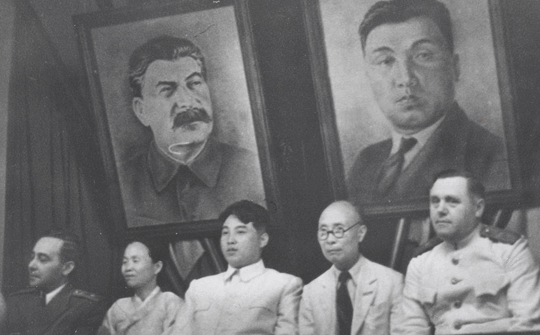Prof. Kathryn Weathersby
One of the ways the Soviets and the Americans differed in their approach to the occupation of Korea was a result of the vast disparity in their economic situations. The United States emerged from World War II with far greater wealth and industrial capacity than any other country, while the USSR was physically devastated by the war. Consequently, Moscow was determined to extract as much economic benefit as possible from all of the areas the Red Army occupied in 1945, in Europe as well as Asia. They thus created a physical division of Korea, along with the political one co-created with the Americans.
We have seen that in November the US presented Moscow with a list of concerns about physical problems in Korea created by the division at the 38th parallel. Secretary of State Byrnes then raised these issues at the beginning of the discussion of the Korean question at the Moscow Conference of Allied Foreign Ministers in December. While the conference decision focused on creating a mechanism for trusteeship, it also included a provision that the two occupation commands would meet soon to discuss the economic issues raised by the US in November. Accordingly, on January 16 Soviet and American representatives met in Seoul to discuss the practical problems caused by the sectoral division.
As head of the Soviet delegation, Shtykov tellingly defined the issue as a matter of exchange of goods between the two military commands. He insisted, moreover, that this trade must be conducted through barter, presumably to avoid expending scarce hard currency to supply northern Korea. He brought the meeting to an impasse by demanding that electrical power, coal, and manufactured goods from the north, all desperately needed in the southern zone, could only be delivered in exchange for rice, which was also in short supply in the South. The Americans refused to accept these terms, and the two sides agreed only to restore limited mail service and transportation between the zones, allocate radio frequencies, and establish joint control posts and other measures that would make it easier for the two occupiers to coordinate their actions.
In the wake of the Moscow Conference the Soviet authorities also acted quickly to create the foundation for a Soviet-style economic system in the North. The first and most basic step was the same as it had been in the Soviet Union itself – to confiscate land from landowners and redistribute it to peasants. They mobilized the communist party and the recently created government structures to carry out land reform before the Joint Commission would meet in late March. They could thereby ensure that regardless of what happened in Seoul, the Soviet Union would retain control over at least the northern half of the peninsula.
On March 5 the Provisional People’s Committee passed a law for the confiscation of land belonging to the following persons or institutions: the Japanese state or individual Japanese, “traitors to the Korean people who had actively collaborated with the Japanese organs of power and to those who had fled the country at the time of Korea’s liberation from the Japanese yoke, Korean landlords who owned farms of more than five chon [transliteration from the Russian that perhaps refers to the Japanese unit tan], landlords who did not carry on their farming and had given all their land on lease, owners of plots of land, who had, irrespective of its size, given it systematically on lease, and churches that had more than five chon of land.”
The law specified that the People’s Committees would seize control of the tractors, agricultural implements, outhouses, and estates of the landlords and distribute them to peasants, along with forests, irrigation and other technical equipment. According to F.I. Shabshina, who served in the Soviet consulate in Seoul during this time, more than one million chon of land was confiscated and distributed to 725,000 peasants.
The full records of the land reform have not yet been released, but Russian documents we do have refer to instances of violent opposition to the law. They also mention cases of party members using “excessive zeal.” As happened in many other countries, communist land reform was sometimes used as a way to settle personal grievances. In any case, after five weeks, Kim Il Sung reported to an enlarged plenum of the party’s Organization Bureau that the land reform “has destroyed feudal relations in the countryside, it has laid the foundation for the development of the entire economy of North Korea.”
The next post will examine the instructions the Foreign Ministry sent to the Soviet delegation for the opening of the Joint Commission on March 20, which laid out a detailed description of the “democratic” state that must result from the Provisional Government the Joint Commission was to create.
[Sources: Foreign Relations of the United States, 1946, Volume VIII; F.I. Shabshina, “Koreia posle vtoroi mirovoi voiny [Korea after the second world war,” Akademiia nauk SSSR [Academy of Sciences USSR] Krizis kolonial’noi sistemy natsional’no-osvoboditel’naia borba narodov vostochnoi asii [Crisis of the colonial system, national-liberation struggle of the peoples of East Asia] (1949); Russian State Archive of Social-Political History, Fond 17, Opis 128, Delo 205]

I really enjoy the contents of your post,
Your work is great
Downvoting a post can decrease pending rewards and make it less visible. Common reasons:
Submit